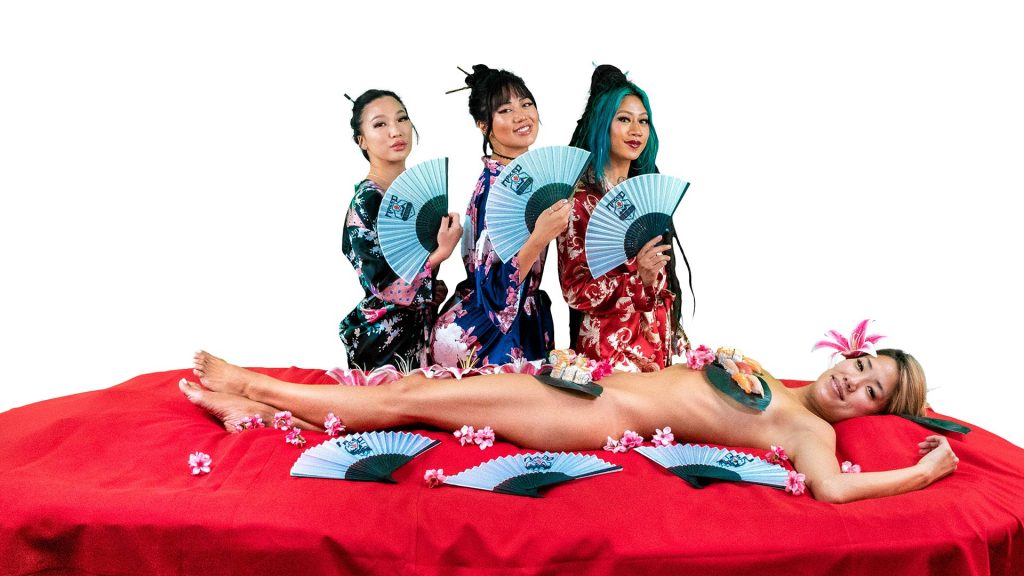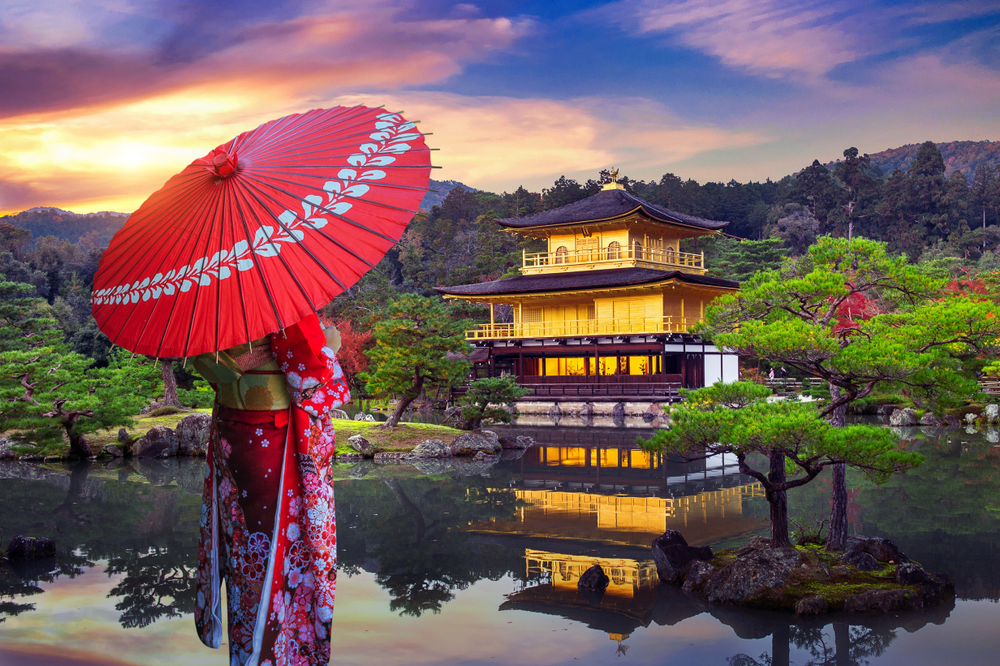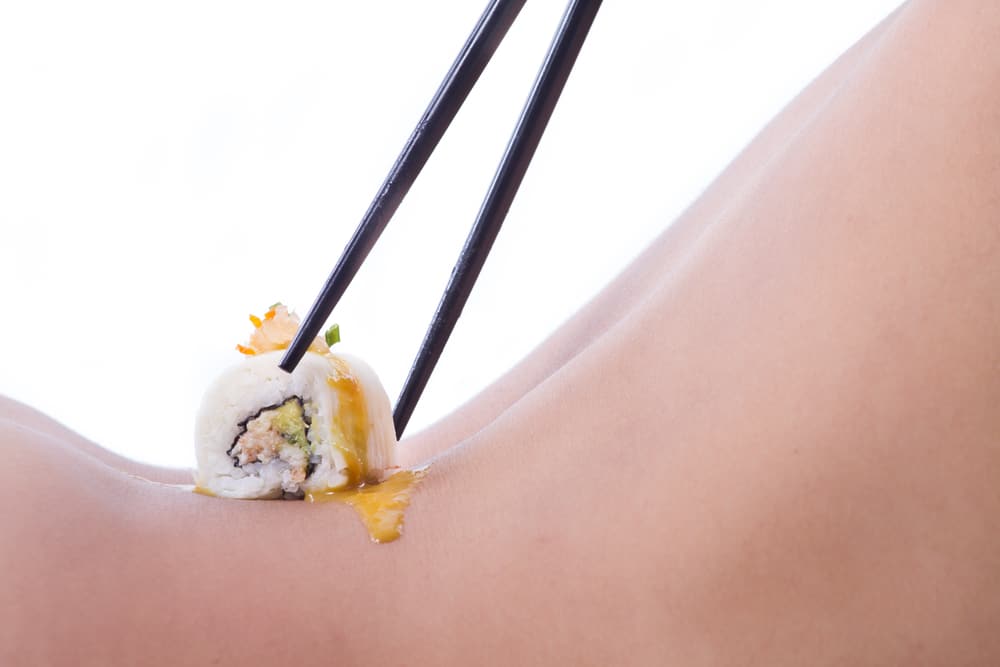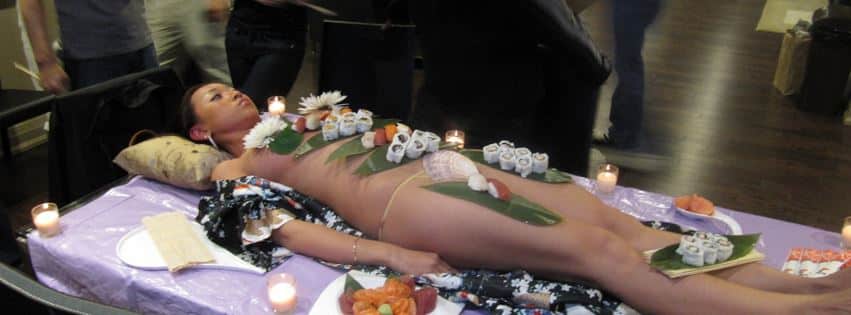With its ability to combine simplicity and complexity, sushi is a cuisine that has won over the hearts and palates of foodies all over the world. It originated in Japan. Once a way to preserve fish, this famous dish has developed into a culinary art form renowned for its deft harmony of tastes, textures, and visual appeal. Sushi changed and evolved as it traveled across continents, reflecting the customs and preferences of the areas it encountered. Its international success is evidence of the allure that comes from fusing top-notch ingredients with painstaking preparation to produce something genuinely remarkable.
Sushi has captured the minds and palates of food enthusiasts everywhere with its ability to blend simplicity and complexity. Japan is where it all began. This well-known dish, originally meant to be a means of preserving fish, has evolved into a kind of culinary art recognized for its skillful balancing of flavors, textures, and visual appeal. As sushi moved across continents, it altered and developed, taking on the tastes and customs of the places it came across. Its widespread popularity is proof of the appeal that results from combining premium ingredients with labor-intensive preparation to create something really exceptional.
Las Vegas has welcomed these distinctive sushi experiences with wide arms, as the city thrives on show and originality. Las Vegas, which is well-known for its lavish casinos, spectacular entertainment, and top-notch restaurants, provides the ideal setting for the spectacular and the ostentatious. Between the plethora of culinary experiences in this city of lights, Nyotaimori and Nantaimori make a home, encouraging both locals and visitors to push the boundaries of traditional eating. Naked sushi is more than just a dish when we dig deeper into the center of Las Vegas’s culinary industry; it’s a monument to the city’s never-ending quest for innovation and its capacity to elevate eating to the status of an art form.
We encourage readers to be receptive to the infinite possibilities found in the culinary arts as we delve into the story of sushi’s evolution from a modest Japanese meal to the focal point of culinary creativity in Las Vegas. Sushi’s growth, characterized by a love of history and a daring streak, mirrors our own quest to comprehend and value the multitude of ways that we may engage with and savor the basic act of eating.
This is a culinary art and human aesthetics fusion that invites diners to interact more intimately and viscerally with their food, challenging traditional eating experiences. A memorable lunch may be created not only by the flavor of the sushi but also by its presentation, texture, and overall ambience. The method invites diners to reevaluate how they view tradition, art, and beauty—viewing them as complementary aspects that may live harmoniously rather than as distinct domains.
Nyotaimori and Nantaimori stretch the limits of conventional gastronomic experiences, eliciting conversations about ethics and art. While some may perceive these customs through a more critical lens, others may consider them as a celebration of the human form and a testimonial to the sushi chef’s expertise. Because of this duality, Nyotaimori and Nantaimori are as much about inciting contemplation and dialogue as they are about the actual act of dining.
Nyotaimori and Nantaimori have found homes outside of Japan in the contemporary era, blending in with other eating settings and cultures while each contributing their own interpretations and admirations for the art form. The discourse around these activities has become more diverse as a result of their worldwide reach, encouraging a larger audience to investigate the connections between culinary art, human aesthetics, and cultural heritage.
In the end, Nyotaimori and Nantaimori serve as examples of the virtually endless possibilities in food expression. They push customers to understand the profound cultural origins that food may convey, to open their minds to new ideas, and to find beauty in unexpected places. We are reminded that dining can be an experience that feeds the body as well as the soul through this marriage of art and cuisine.

Sushi Meets Spectacle – The Las Vegas Scene
Beyond merely standard eating, Las Vegas—a city known for its brilliant lights, unmatched entertainment, and gastronomic extravagance—offers more. This is a city where the lines between performing and culinary arts are blurred, offering extraordinary experiences to those looking for something unique. Adding a memorable depth to its culinary scene, Las Vegas has adopted the unusual and avant-garde tradition of Nyotaimori and Nantaimori, which involves serving sushi on human bodies, among its many other dining shows.
The Artful Fusion of Culinary and Performance
Several upscale places in the city center have perfected the technique of fusing the age-old practice of body sushi with the flashy style that makes Vegas famous. These places, which are frequently hidden in the posh areas of the most lavish hotels and casinos in Las Vegas, provide an immersive dining experience that beyond simple eating. It’s about indulging in culinary and artistic experiences that entice the senses on every level. The models lie decorated with well prepared sushi arrangements, their bodies changed into moving works of art. They have been trained to be both a canvas and a participant in this culinary art form. By combining the skill of sushi production with the beauty of the human form, this approach transforms the eating experience into a performance.
Venues that Highlight the Spectacle
A noteworthy location combines live traditional Japanese music with a Nyotaimori experience to create an ambiance that is at once magnificent and intimate. Diners are transported to a location where food and music are used to tell a tale with each mouthful and note played thanks to the gloomy lighting and décor. It’s an encounter that honors Nyotaimori’s heritage while embracing the theatricality that attracts customers from Las Vegas.
For its Nantaimori and Nyotaimori evenings, another business adopts a more contemporary strategy, combining futuristic lighting and electronic music to create a lively, almost club-like ambiance. Here, the sushi is integrated into a more elaborate show, with the models serving as live centerpieces to an ever-evolving, constantly-changing exhibition of culinary creativity rather than merely tables.
The Contribution to Las Vegas’s Image as a City of Spectacle
The perception of Las Vegas as a city where the exceptional is commonplace is further enhanced by these distinctive eating experiences. Offering both tourists and residents a taste of something that exceeds the limits of standard cuisine, they embodies the city’s reputation for creativity and extravagance. Furthermore, they demonstrate how Las Vegas has the capacity to absorb and modify cultural customs from all over the world and transform them into something that is wholly own.
The goal of Nyotaimori and Nantaimori in Las Vegas is to create an experience that is shared, recalled, and talked about long after the last sushi dish has been had. They are not only about shock value or novelty. It’s proof positive of the city’s dynamic food culture, which never fails to astonish, amaze, and satisfy those seeking for unique experiences throughout the globe.
Not only do its entertainment and casinos deliver on the promise of amazing nights, but its daring and inventive culinary endeavors do the same. The Nyotaimori and Nantaimori experiences are a veritable feast for the senses, demonstrating how Las Vegas continues to be at the forefront of fusing art and entertainment.

Beyond the Plate – The Experience of Eating Sushi off a Person
Nyotaimori and Nantaimori take customers on a multisensory trip that is as visually stunning as it is delicious, going beyond the conventional eating experience. The technique transforms the human form into a living, breathing canvas for culinary art by painstakingly preparing sushi and sashimi and artistically arranging them on a model’s body. The combination of fine cuisine and visual art results in a private and social experience.
Visual Appeal: Seeing is the first sense with which one interacts. Sushi that has been carefully prepared to contrast with the natural tones of the human body is visually arresting. This visual appeal recognizes the body as a part of the natural world, just as the ingredients in sushi do, and is more than merely shock value or novelty. It is an appreciation of harmony and beauty.
Taste and Aroma: When guests start to eat the sushi, their attention turns to the flavor. Highlights include the delicate flavors of each roll and nigiri piece, the freshness of the seafood, and the sharpness of the rice vinegar. A further dimension of freshness and immediacy is given to the experience since the sushi is eaten right out of the package, straight from the chef to the customer.
Aspect of Community: Nyotaimori and Nantaimori are by their very nature community experiences. They dismantle boundaries by encouraging guests to participate in moments of delight and astonishment that are shared. Conversations on the cuisine, the artwork, and the cultural significance of the activity itself are all sparked by this communal feasting. It’s a chance for diners to engage with one another that may not be possible in more conventional eating environments.
Etiquette and Respect
Etiquette and respect are deeply ingrained in the experiences of Nyotaimori and Nantaimori. This is about recognizing the human aspect of the exercise, not just following societal norms.
Respect for the Model: In Nyotaimori and Nantaimori, the model is an active participant who breathes life into the artwork rather than a passive object. It is crucial to show them respect for their comfort, dignity, and professionalism. It is expected of guests to interact with the experience in a thoughtful way that recognizes the model’s contribution to producing this special dining experience.
Dining Etiquette: To preserve the purity of the experience, there are certain etiquette related to Nyotaimori and Nantaimori. For example, it’s customary to recommend using chopsticks to eat rather than eating with your hands in order to maintain a polite distance and conversation. In order to maintain comfort and hygiene, the model is also prepared with food put on leaves or other separators as needed.
Mutual Appreciation: At the end of the day, the experience is based on mutual appreciation. While the models participate in the production of a communal culinary artwork, the diners are struck by the models’ sensitivity and skill. All parties involved may continue to enjoy and participate in the event with dignity because to this mutual respect.

Fusion and Controversy – A Culinary Debate
Cultural, ethical, and artistic debates are stirred up by the dining customs of Nyotaimori and Nantaimori, where sushi is artistically portrayed on the human body. These customs, which have their origins in specific traditions, have permeated contemporary eating environments, particularly in open-minded and diverse cities like Las Vegas. They are not without controversy, though, with the main ones centered on the ideas of objectification against creativity and the conflict between modernity and tradition.
The Perspective of Artistry and Tradition
Experts in Nyotaimori and Nantaimori cuisine frequently see what they do as a kind of haute art, highlighting the dexterity, artistry, and ability required to arrange sushi on a human figure. According to these practitioners, eating becomes a participatory art show as the body serves as a live canvas. Some cultural critics endorse this viewpoint by pointing out that Nyotaimori and Nantaimori have historical roots in Japanese samurai society, where they were customs for commemorating military victories. They contend that in order to appreciate these acts as forms of art and tradition rather than just novelty, it is necessary to comprehend the context and history surrounding them.
The Modern Dining Experience
From the viewpoint of customers, particularly those in urban settings like Las Vegas, restaurants like Nyotaimori and Nantaimori provide a rare blend of performance art and gastronomic inquiry. Many see it as a chance to interact with food in a totally different way, departing from the traditional eating experience. These eaters frequently consider themselves to be part of a live art installation, where eating is combined with appreciating art and learning about different cultures.
Addressing Concerns of Objectification
These methods are not without detractors, though. There are many who contend that Nyotaimori and Nantaimori almost amount to objectification of the human body, treating the person on the dish like a food item. Taking into account the gender dynamics that are frequently at work—Nyotaimori, which features female models—this viewpoint is especially pertinent. Critics contend that the practice can support harmful ideas about body commodification even in the face of consent and expertise.
Balancing Perspectives
The debate surrounding Nyotaimori and Nantaimori, according to cultural critics and ethicists, can only be resolved by carefully balancing consent, respect, and cultural sensitivity. They contend that these activities are legitimate forms of creative and culinary expression as long as they take place in settings where the models are respected, paid appropriately, and willingly participate. They also stress the significance of dining manners, reminding patrons to appreciate the human element of the custom and see it as an artistic and traditional endeavor rather than a fad.
Furthermore, some contend that the incorporation of these customs into contemporary eating, particularly in multicultural and accepting areas like Las Vegas, is evidence of the dynamic nature of the culinary arts. It is representative of a larger movement that combines innovation with tradition to create experiences that broaden and challenge our perceptions of cuisine, art, and culture.

Las Vegas – A Culinary Melting Pot
Though it’s more well-known for its flashing lights and nonstop entertainment, Las Vegas is also a gastronomic hotspot, where cuisines from across the globe come together in a dizzying array of conventional and nontraditional methods. This oasis in the desert has created a setting where culinary creativity is unrestricted, providing an experience that transcends the gaming tables and showrooms. It is in this colorful and cosmopolitan environment that one can really appreciate Las Vegas’s unique blend of cuisines.
World-class chefs and local culinary heroes alike take inspiration from all corners of the world to produce dining experiences that are both cutting edge and firmly entrenched in tradition, making Las Vegas’ culinary culture as diverse as its patrons. Every meal in Las Vegas is a tribute to the city’s diverse culinary influences, from the vibrant streets of Chinatown, which offers real Asian food, to the rustic Italian restaurants and cutting-edge French bistros.
Unconventional eating experiences flourish among this rich tapestry, such as the fascinating practice of Nyotaimori and Nantaimori, which have made a special home for themselves in Las Vegas. But the examination of the city’s food scene doesn’t end here. The culinary landscape in Las Vegas is always changing, ranging from elite restaurants with experimental tasting menus that defy preconceived notions about what dining might be to gourmet food trucks selling fusion meals that blur the borders between cuisines.
Farm-to-table restaurants highlight the fresh and responsibly grown products found in Nevada, while themed dining venues transport patrons from the medieval to the futuristic, from the streets of New York to the heart of Paris.
The food scene in Las Vegas is an adventure for the daring diner. Year-round, the city organizes a wealth of food festivals and gourmet events that invite foreign chefs to share their culinary craft with local talent. Foodies get a great chance to explore the depths of Las Vegas’s culinary diversity at these events, from sampling classic meals prepared using centuries-old recipes to indulging in cutting-edge culinary trends that defy the imagination.
Discovering the vast and varied food scene of Las Vegas is like taking a voyage across the world that satisfies the senses and uplifts the spirit. It is a call to explore the world via the sense of taste, where each meal serves as a vehicle for expressing one’s creativity, cultural history, and common language of flavor. Therefore, Las Vegas encourages its guests to relish every minute and every bite of its unmatched gastronomic journey, which goes much beyond the ordinary, whether it’s the attraction of naked sushi or the attractiveness of a Parisian café in the middle of the Nevada desert.
By taking advantage of the many culinary options available in the city, one may enjoy delicious cuisine while also contributing to the diverse array of cultures and tales that make Las Vegas’s eating scene so enthralling. It’s an invitation to explore, taste, and find the remarkable in the seemingly ordinary; it’s a reminder to locate the world inside a city and to keep in mind that the extraordinary is only a dish away in Las Vegas.
The practice of openness is not just a virtue but also essential when it comes to culinary inquiry. This willingness to explore new culinary vistas, from the inventive dining experiences of Las Vegas to the customary sushi rolls of Japan, is what enables us to fully appreciate the diverse range of flavors, customs, and inventions that make up our world’s culinary history. Though its origins are in ancient custom, Nyotaimori and Nantaimori are contemporary manifestations of artistic expression and a celebration of the human form that force us to reconsider how we see meals and manners.
As a city that personifies the merging of cultures and the acceptance of the unusual, Las Vegas provides an unparalleled viewpoint from which to see and take part in this gastronomic revolution. Here, the avant-garde and the conventional coexist and even thrive, resulting in a dynamic mosaic of dining experiences that may surprise, delight, and broaden our palates in ways we never would have thought possible. Experiences in Las Vegas are as varied and exciting as the city itself, providing rewards for those who are open to discovering and embracing new gastronomic pleasures.
This fusion of creativity, tradition, and innovation in food experiences reflects a greater openness to cultural diversity that profoundly improves our lives. We engage with a universe of ideas, flavors, and practices that deepen our knowledge and enjoyment of what it means to eat when we venture beyond the familiar and embrace the unfamiliar. The culinary world is a limitless source of discovery and happiness, whether it’s the excitement of tasting something completely new, the aesthetic pleasure of a wonderfully prepared dish, or the communal joy of sharing a meal.
It’s evident that Las Vegas is more than just a travel destination when we consider the diverse culinary experiences it has to offer, from the classic sushi bars to the unusual appeal of Nyotaimori and Nantaimori. The city is a celebration of the limitless opportunities that present themselves when we approach the world with curiosity, openness, and a voracious appetite for adventure. Thus, let’s keep discovering, tasting, and appreciating the various ways that food unites us, subverts stereotypes, and satisfies our senses. By doing this, we honor the craft of gastronomic discovery as well as the dynamic tale of human ingenuity and camaraderie.
From the classic sushi bars to the unusual charm of Nyotaimori and Nantaimori, Las Vegas offers a wide variety of unique culinary experiences. It’s evident that the city is more than just a travel destination—it’s a celebration of the limitless opportunities that present themselves when we approach life with curiosity, openness, and a voracious appetite for adventure. Thus let us investigate, sample, and commemorate the many ways that food unites us, defies our preconceptions, and stimulates our senses. We honor the craft of culinary discovery as well as the dynamic tale of human ingenuity and camaraderie by doing this.



Recent Comments